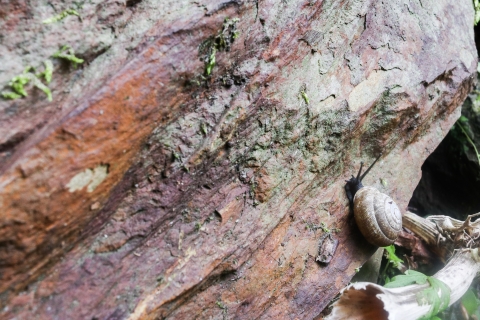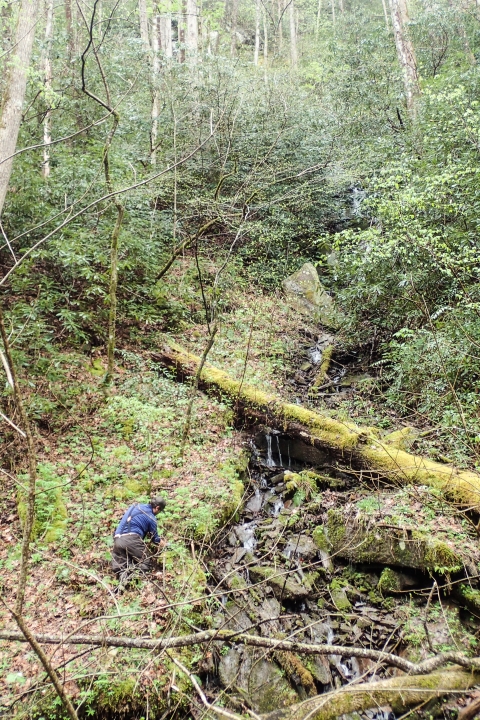Overview
In the late 1970s, the widening of U.S. Route 19 through western North Carolina’s Nantahala River gorge was proposed. Not only is the gorge the only place the noonday globe snail is known to live, but the snails are limited to the north-facing slope of the gorge. Due in part to the threat posed by the proposed expansion, the noonday globe snail was place on the Federal threatened and endangered species list, as threatened, in 1978.
Plans for the widening of the highway were subsequently dropped and, at least currently, no longer pose a threat to the species. However, the Nantahala River and Nantahala Gorge are extremely popular recreational areas and much of the private land adjacent to national forest within the gorge has been developed or is being developed to cater to rafters, kayakers, hikers and other recreational users. Additionally, forest clearing and disturbance associated with this development has contributed to spread of kudzu (Pueraria lobata), Japanese honeysuckle (Lonicera japonica), and other invasive, non-native plants that have eliminated suitable habitat for the snail within portions of the disturbed areas of the gorge. Despite these threats, the snail’s population appears to be stable.
Habitat
The area of the Nantahala River Gorge where the snail lives is steeply sloped and contains a forested mix of hardwood tree species and hemlock with a rich herbaceous understory. This herbaceous understory is different from the surrounding slopes due to underlying calcareous rock and northern exposure. The southeast side of the gorge is very steep and its cliffs are interrupted frequently by small streams, waterfalls, seeps, and springs. The cliffs are heavily forested, and in many places are shaded for most of the day. The forest floor often has a thick humus layer and there is much exposed rock. Moist conditions appear to be critical to the species, often being found on our around moist rock outcrops, or among leaf litter and humus layers around the base of vegetation.
Food
Nothing is known about the snail’s food preferences or feeding behavior. Related snails are believed to eat fungi.
Physical characteristics
The noonday globe snail measures approximately ¾ inch wide and ½ inch high and has a rounded shell. Its shell is shiny and reddish in color. The surface of the shell is sculptured with rather coarse lines. The area around the shell opening (aperture) is white with a long curved “tooth” located inside the opening. The animal’s body is black.
Range
The noonday globe is only known from the north-facing side of Nantahala River Gorge. It was originally thought to live from the vicinity of Silver Mine Creek at the northern edge of the gorge, southwest to the vicinity of the U.S. Route 19 bridge crossing the Nantahala River near the southern end of the gorge, however recent survey efforts led to an expansion in its known range from a roughly three-kilometer stretch of the gorge to a six-kilometer stretch. Within this area, the species has been found at scattered sites from the southeast side of NC Highway 19 to near the top ridge of the gorge.
Scientific Name
Identification Numbers
Timeline
Explore the information available for this taxon's timeline. You can select an event on the timeline to view more information, or cycle through the content available in the carousel below.
4 Items

